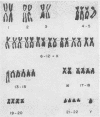Abstract
The karyotype of a child with severe mental retardation, microcephaly, minor facial anomalies, and urinary tract outflow obstruction was found to be 46,XY,13q+mat. Trypsin-Giemsa banding studies showed an inherited translocation, t(4q−;13q+), in several asymptomatic members of the family including the propositus' mother. This indicates that the propositus had partial trisomy for the distal one-third of the long arm of chromosome 4. Review of the literature suggests that urinary tract and genital anomalies may be a consistent feature of this partial trisomy.
Full text
PDF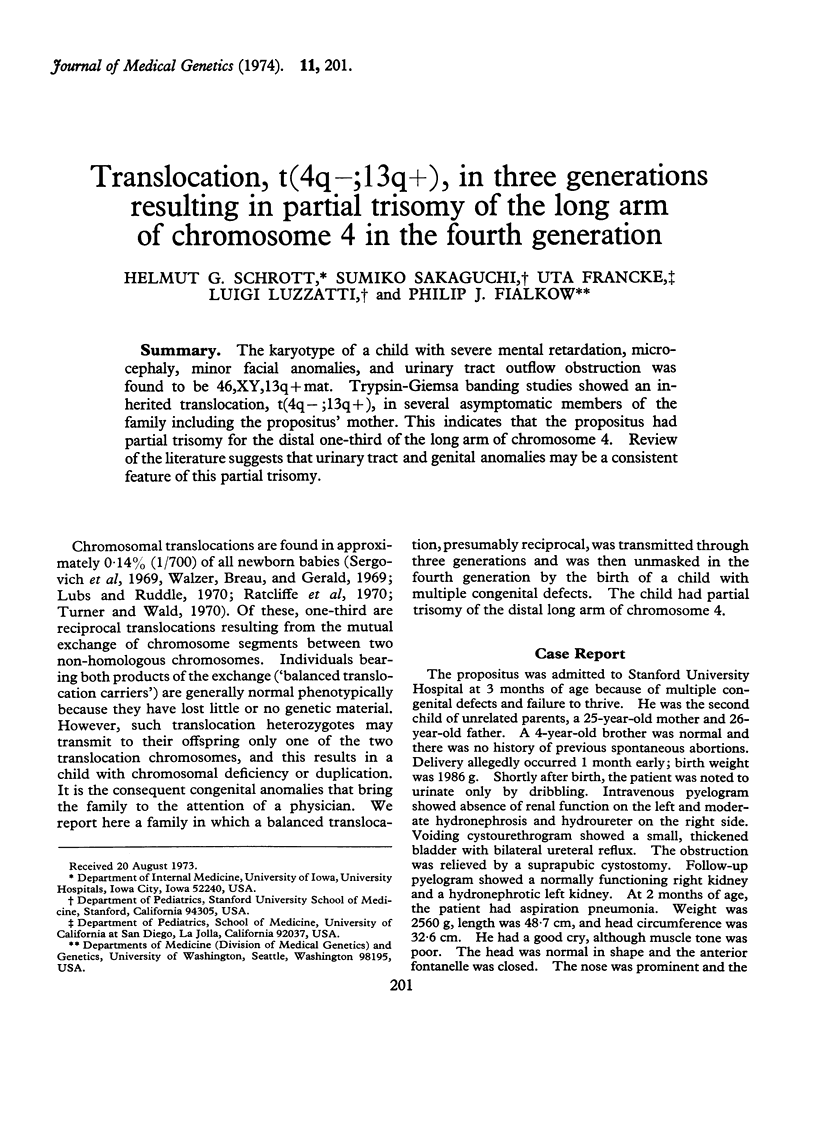
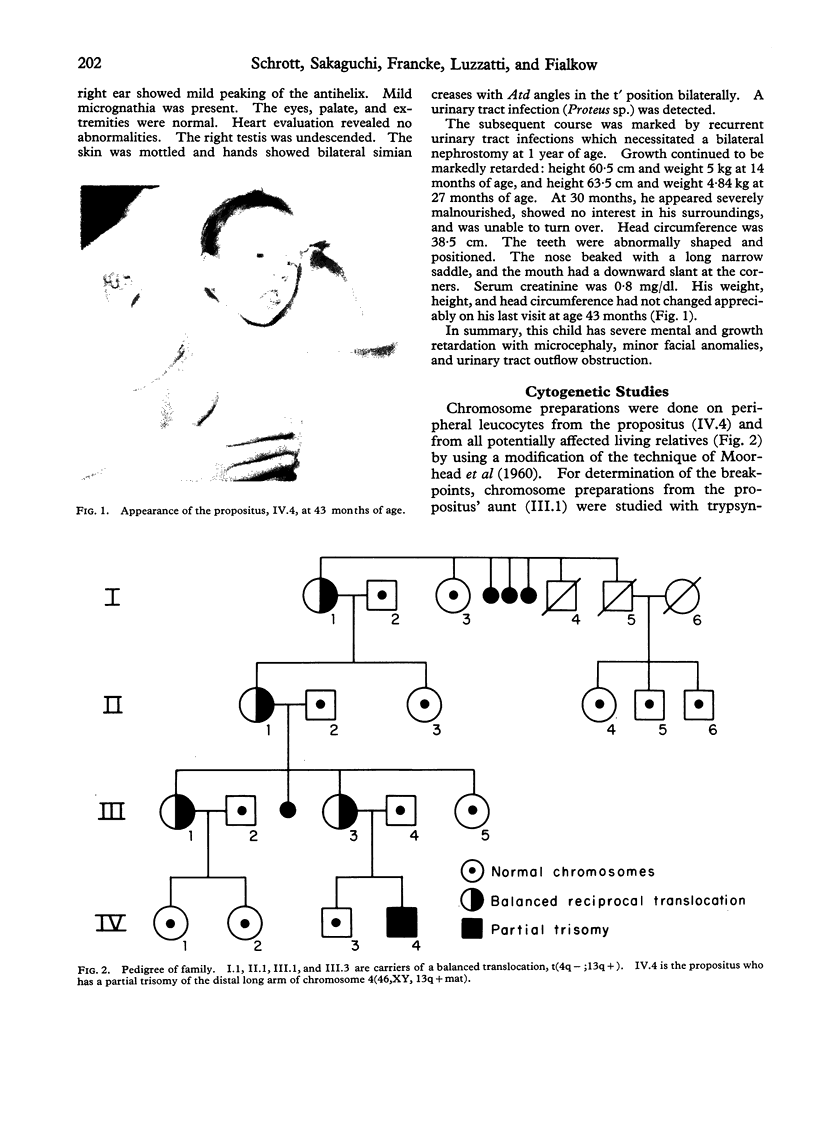
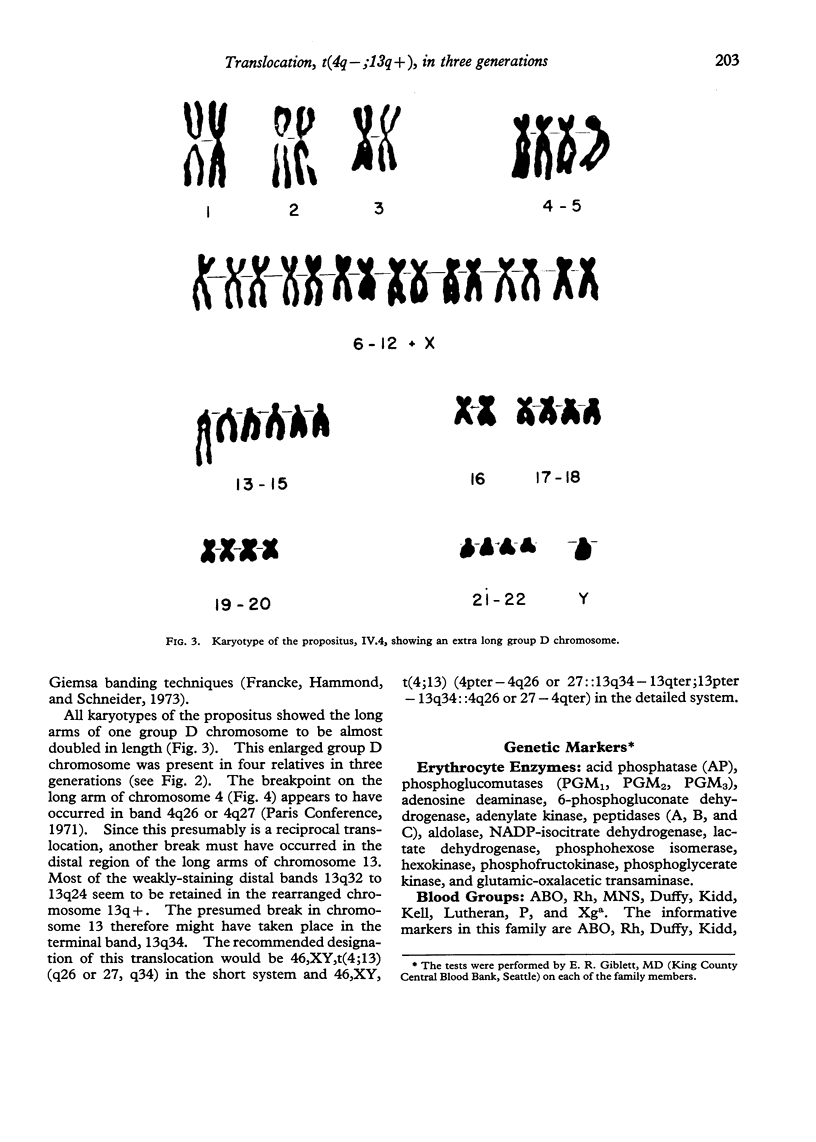
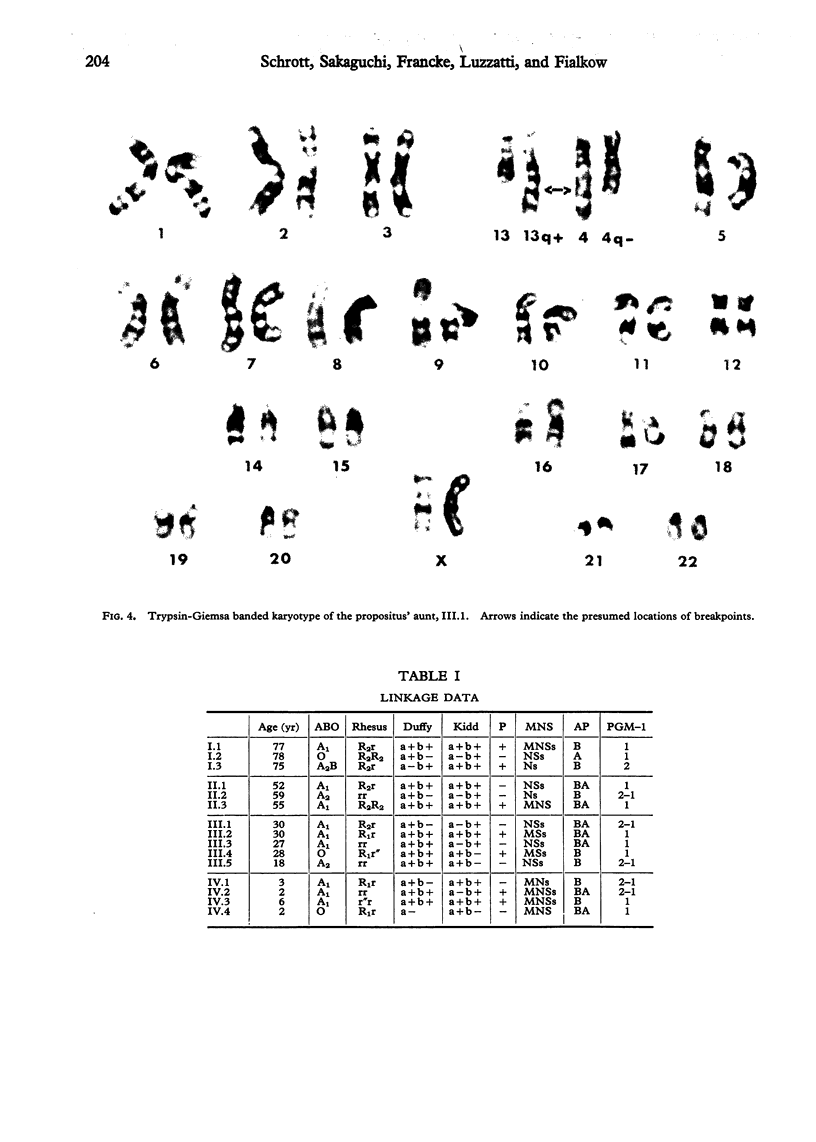
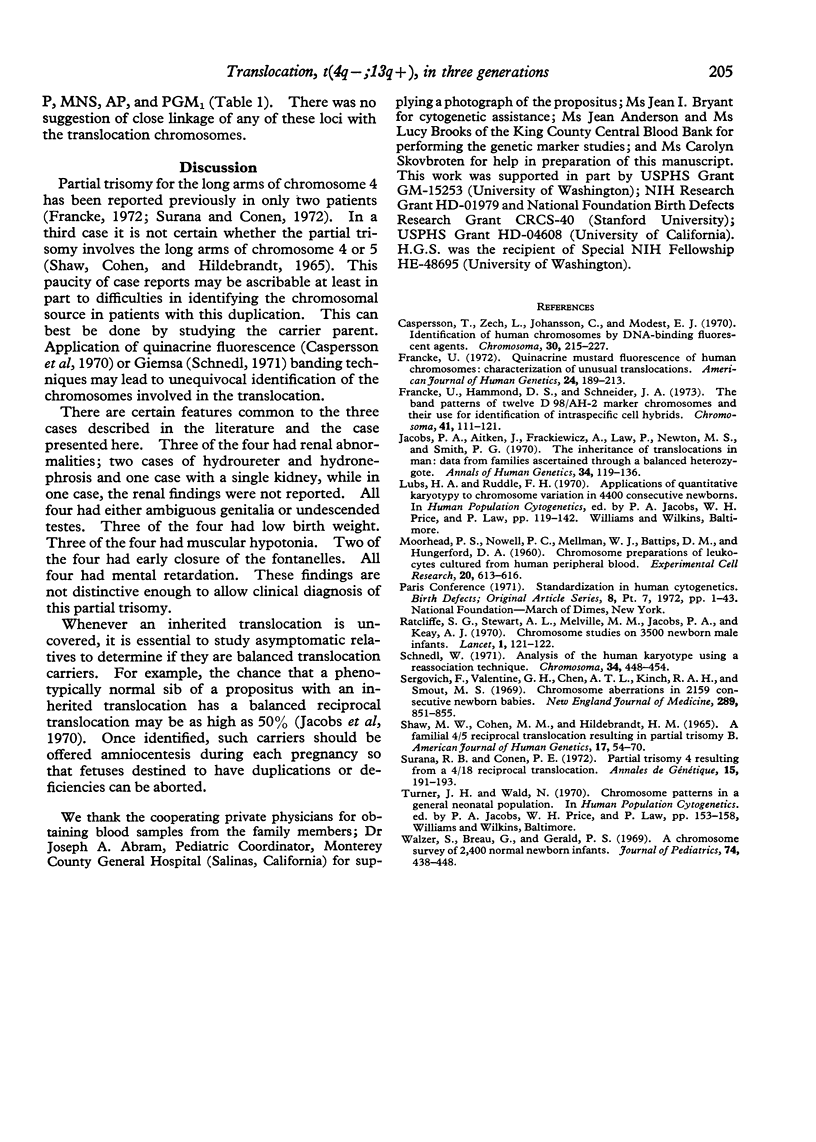
Images in this article
Selected References
These references are in PubMed. This may not be the complete list of references from this article.
- Caspersson T., Zech L., Johansson C., Modest E. J. Identification of human chromosomes by DNA-binding fluorescent agents. Chromosoma. 1970;30(2):215–227. doi: 10.1007/BF00282002. [DOI] [PubMed] [Google Scholar]
- Francke U., Hammond D. S., Schneider J. A. The band patterns of twelve D 98-AH-2 marker chromosomes and their use for identification of intraspecific cell hybrids. Chromosoma. 1973;41(1):111–121. doi: 10.1007/BF00284079. [DOI] [PubMed] [Google Scholar]
- Francke U. Quinacrine mustard fluorescence of human chromosomes: characterization of unusual translocations. Am J Hum Genet. 1972 Mar;24(2):189–213. [PMC free article] [PubMed] [Google Scholar]
- Jacobs P. A., Aitken J., Frackiewicz A., Law P., Newton M. S., Smith P. G. The inheritance of translocations in man: data from families ascertained through a balanced heterozygote. Ann Hum Genet. 1970 Oct;34(2):119–136. doi: 10.1111/j.1469-1809.1970.tb00226.x. [DOI] [PubMed] [Google Scholar]
- MOORHEAD P. S., NOWELL P. C., MELLMAN W. J., BATTIPS D. M., HUNGERFORD D. A. Chromosome preparations of leukocytes cultured from human peripheral blood. Exp Cell Res. 1960 Sep;20:613–616. doi: 10.1016/0014-4827(60)90138-5. [DOI] [PubMed] [Google Scholar]
- Ratcliffe S. G., Stewart A. L., Melville M. M., Jacobs P. A., Keay A. J. Chromosome studies on 3500 newborn male infants. Lancet. 1970 Jan 17;1(7638):121–122. doi: 10.1016/s0140-6736(70)90469-1. [DOI] [PubMed] [Google Scholar]
- SHAW M. W., COHEN M. M., HILDERBRANDT H. M. A FAMILIAL 4/5 RECIPROCAL TRANSLOCATION RESULTING IN PARTIAL TRISOMY B. Am J Hum Genet. 1965 Jan;17:54–70. [PMC free article] [PubMed] [Google Scholar]
- Schnedl W. Analysis of the human karyotype using a reassociation technique. Chromosoma. 1971;34(4):448–454. doi: 10.1007/BF00326316. [DOI] [PubMed] [Google Scholar]
- Sergovich F., Valentine G. H., Chen A. T., Kinch R. A., Smout M. S. Chromosome aberrations in 2159 consecutive newborn babies. N Engl J Med. 1969 Apr 17;280(16):851–855. doi: 10.1056/NEJM196904172801602. [DOI] [PubMed] [Google Scholar]
- Surana R. B., Conen P. E. Partial trisomy 4 resulting from a 4-18 reciprocal translocation. Ann Genet. 1972 Sep;15(3):191–194. [PubMed] [Google Scholar]
- Walzer S., Breau G., Gerald P. S. A chromosome survey of 2,400 normal newborn infants. J Pediatr. 1969 Mar;74(3):438–448. doi: 10.1016/s0022-3476(69)80202-7. [DOI] [PubMed] [Google Scholar]




